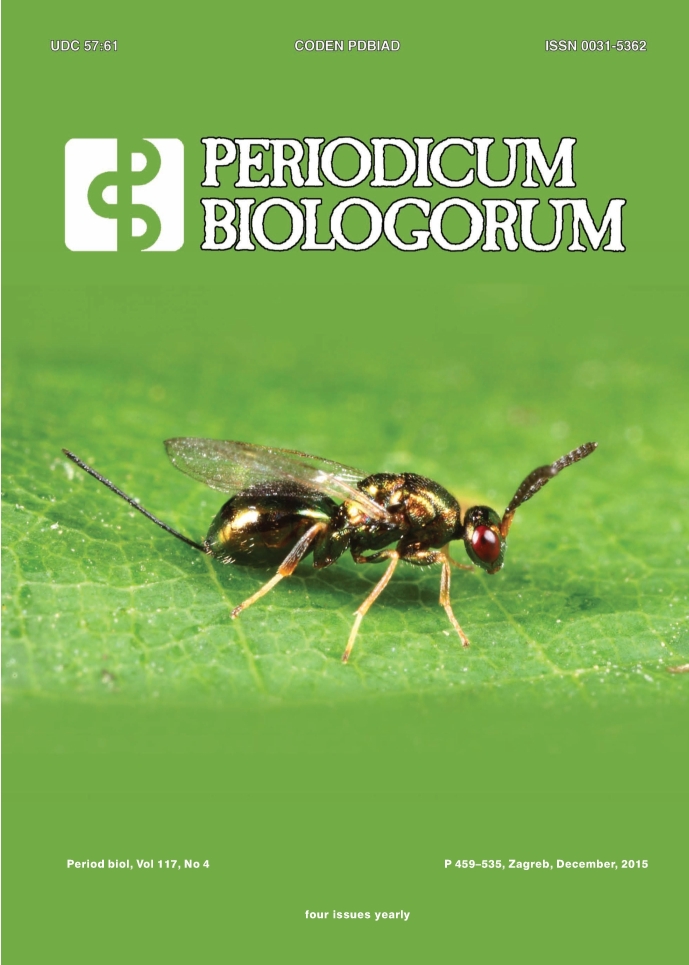The impact of the container size and soil preparation on afforestation success of one year old holm oak (quercus ilex) seedlings in Croatian Mediterranean area
DOI:
https://doi.org/10.18054/pb.v117i4.3532Abstract
Background and Purpose: Morphological features of one year old holm oak (Quercus ilex) seedlings grown in different types of containers were analyzed in order to establish the effect of container type on seedlings’ development. The survival rates and the development of the seedlings were measured and monitored in the period of six years, on an experimental plot with the aim to assess the influence of container size and soil preparation on afforestation success in Mediterranean karst area.
Materials and Methods: Four types of containers were used: MP53/12, MP33/18, T7/24 and T8/24. Morphological features of seedlings include: height, root collar diameter, biomass of the aboveground part, root biomass and total biomass. Two morphological indexes were calculated from the measured variables: S:R ratio and DQI. Morphological dimensions of root systems are, namely: total length, the number of tips, surface area and volume. Seedlings were arranged over the area of the experimental plot according to the randomized block method. Within each block (0,2 ha) two types of soil preparation prior to planting were performed: in pits with dimensions of 40 × 40 × 40 cm, and on the ripping ground. Each year during the experiment, seedlings were measured for height increment and survival rates (e.g. mortality), with respect to the container type and the planting method.
Results: Almost all morphological features of seedlings have significantly higher values in larger containers (T7/24 and T8/24) compared to smaller containers (MP53/12 and MP33/18). Survival rates over six years in field experiment are influenced mainly by container size in interaction with soil preparation method (exp (β) = 6.5789; p < 0.0001). The container size exhibited influence on height increment of holm oak during first six years (F = 20.619, p = 0.000012).
Conclusions: Soil preparation by ripping combined with high-quality seedlings played the most important role in the holm oak’s survival in the research area.
Key words: Mediterranean karst area, container type, morphological features of seedlings, soil preparation, afforestation success, height increment
Downloads
Additional Files
- Cover letter
- Copyright transfer statement_Jelić
- Preparation of manuscript
- General features of the containers used in the experiment
- Experimental plot
- Quercus ilex L. distributed on experimental plot
- Average heights of one year old holm oak (Quercus ilex L.) seedlings in different container types
- Morphological characteristics, biomass and qualitative morphological indexes of one year old Holm oak (Quercus ilex L.) seedlings from different container types
- Root systems of one year old holm oak (Quercus ilex L.) seedlings from different container types (MP53/12, MP33/18 and T7/24)
- Holm oak (Quercus ilex L.) survival on ripped ground from different container types (period of six years)
- Holm oak (Quercus ilex L.) survival on the ground where planting in the pits was performed with the seedlings from different container types (period of six years)
- Differences in the volume of the container used in the experiment
- Survival analysis of holm oak (Quercus ilex L.) presented by logistic regression coefficients with the level of significance for the initial height (2003.), soil preparation and container volume
- Height growth of holm oak (Quercus ilex L.) according to container type and soil preparation for period 2003- 2009
- Holm oak from T7/24 containers planted in ripped ground
- Average height growth of holm oak (Quercus ilex L.), according to container type and soil preparation method for period 2003. -2009.
- Height growth of holm oak (Quercus ilex L.) in different container types planted in pits
Published
Issue
Section
License
The contents of PERIODICUM BIOLOGORUM may be reproduced without permission provided that credit is given to the journal. It is the author’s responsibility to obtain permission to reproduce illustrations, tables, etc. from other publications.


